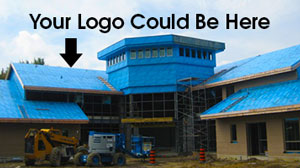The type of primary roof determines the type of underlayment more than any other factor, especially in the case of a tile or metal roofing system. This factor alone can rule out many types of underlayment.
An underlayment for use under tiles needs to be rugged enough to support the weight of stacks of tiles. This requirement eliminates all but the most tried-and-true underlayment for tile applications.
Considering that a tile roofing system sheds water but is not itself a watertight barrier, it is desirable for the underlayment to serve as secondary water barrier. In Florida, hot-mopped asphalt in 90# felt was the benchmark underlayment for tile roofing systems for many decades and is written into many of the building codes.
Many contractors prefer a temperature-resistant, self-adhering underlayment such as Tarco PS200HT high-temperature underlayment, which is designed for use under metal and tile. The modified bitumen compound is especially formulated to withstand the high temperatures that might be present under tile or metal roofs. Though the product is self-adhering it can also be nailed down. The nails penetrate through the top compound, the fiberglass reinforcement and the bottom compound of the underlayment. The modified bitumen is self-sealing around the nails. The PS200HT product has a polyester surface that provides excellent traction. The non-skid polyester fabric surface not only provides for maximum walkability but also helps prevent tile from sliding off the roof.
Synthetic underlayment can also be used under tiles. Tarco recommends its heaviest synthetic underlayment for use under tile applications. LeakBarrier EasyLay UDL Basic is suitable for use under mechanically attached tiles, however, the thicker UDL 50 is suitable for foam applications as well as mechanically attached tiles. UDL 50 has a nominal thickness of 16 mils (compared to 10 mils for UDL Basic and 8 mils for UDL 15) yet it is lightweight (4.5 pounds per square).
The surface of UDL 50 is compatible with foam applications. The tan color provides a cooler surface to work with and the polyolefin material is stable at high-temperatures. It is rated for temperatures up to 320 degrees Fahrenheit.
Since the installation of tiles can be subject to delays, it is wise to use an underlayment with long exposure limits. The polyester top surface of PS200HT protects against UV radiation so the underlayment can be left exposed for up to 90 days while exterior work is being done prior to the installation of the tiles. EasyLay UDL 50 has an exposure limit of six months which is even longer than the modified bitumen choices.
In summary, the following underlayment choices are recommended for tile roof applications:
Good: UDL Basic is suitable for use under tiles that are mechanically attached in climates where rainy weather and secondary water barrier protection are not major concerns.
Better: UDL 50 is better choice as a tile underlayment, especially for foam installations. The greater thickness and high temperature formulation makes for a more rugged underlayment that can stand up to the loads associated with tile installations.
Best: Traditional hot-mopped asphalt over 90# felt is an excellent choice where labor is available and the contractor is willing to work with hot-mopped asphalt. LeakBarrier PS200HT self-adhering membrane is suitable for a superior tile roofing system.



